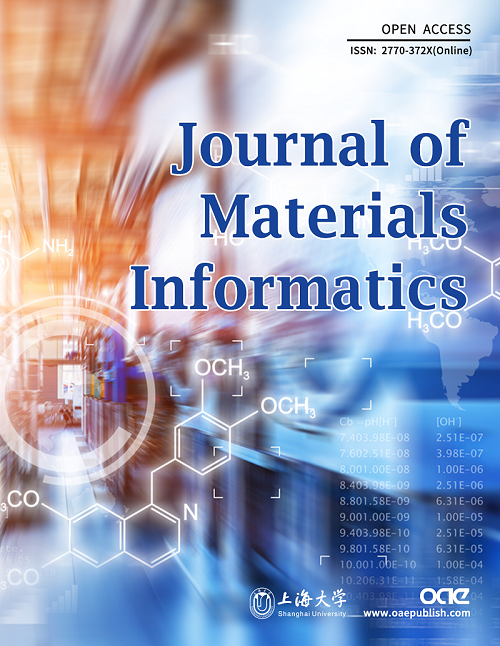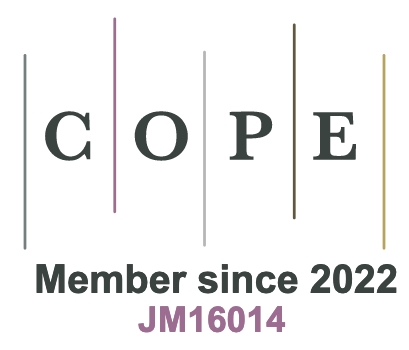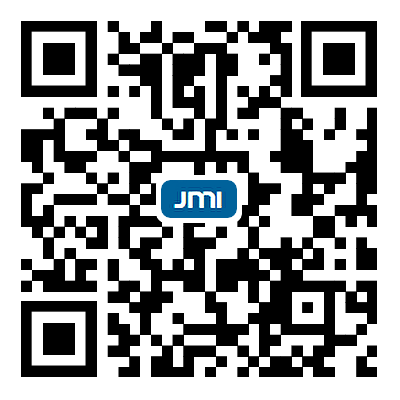REFERENCES
1. Li, N.; Ren, J.; Wang, L.; Zhang, G.; Hänggi, P.; Li, B. Colloquium: Phononics: manipulating heat flow with electronic analogs and beyond. Rev. Mod. Phys. 2012, 84, 1045.
2. van Erp R, Soleimanzadeh R, Nela L, Kampitsis G, Matioli E. Co-designing electronics with microfluidics for more sustainable cooling. Nature 2020, 585, 211-6.
3. Kim, H. S.; Liu, W.; Chen, G.; Chu, C. W.; Ren, Z. Relationship between thermoelectric figure of merit and energy conversion efficiency. Proc. Natl. Acad. Sci. U. S. A. 2015, 112, 8205-10.
4. Ouyang, H.; Gu, Y.; Gao, Z.; et al. Kirigami-inspired thermal regulator. Phys. Rev. Appl. 2023, 19, L011001.
5. Kang, J. S.; Li, M.; Wu, H.; Nguyen, H.; Aoki, T.; Hu, Y. Integration of boron arsenide cooling substrates into gallium nitride devices. Nat. Electron. 2021, 4, 416-23.
6. Xu, L.; Wang, X.; Wang, Y.; Gao, Z.; Ding, X.; Xiao, Y. Enhanced average power factor and ZT value in PbSe thermoelectric material with dual interstitial doping. Energy. Environ. Sci. 2024, 17, 2018-27.
7. Broido, D. A.; Malorny, M.; Birner, G.; Mingo, N.; Stewart, D. A. Intrinsic lattice thermal conductivity of semiconductors from first principles. Appl. Phys. Lett. 2007, 91, 231922.
8. Stackhouse, S.; Stixrude, L. Theoretical methods for calculating the lattice thermal conductivity of minerals. Rev. Mineral. Geochem. 2010, 71, 253-69.
9. Tadano, T.; Tsuneyuki, S. Self-consistent phonon calculations of lattice dynamical properties in cubic SrTiO3 with first-principles anharmonic force constants. Phys. Rev. B. 2015, 92, 054301.
10. Carbogno, C.; Ramprasad, R.; Scheffler, M. Ab initio green-kubo approach for the thermal conductivity of solids. Phys. Rev. Lett. 2017, 118, 175901.
11. Fan, Z.; Pereira, L. F. C.; Wang, H.; Zheng, J.; Donadio, D.; Harju, A. Force and heat current formulas for many-body potentials in molecular dynamics simulations with applications to thermal conductivity calculations. Phys. Rev. B. 2015, 92, 094301.
12. Yusuf, A.; Ballikaya, S. Electrical, thermomechanical and cost analyses of a low-cost thermoelectric generator. Energy 2022, 241, 122934.
13. Luo, Y.; Li, M.; Yuan, H.; Liu, H.; Fang, Y. Predicting lattice thermal conductivity via machine learning: a mini review. npj. Comput. Mater. 2023, 9, 964.
14. Mishin, Y. Machine-learning interatomic potentials for materials science. Acta. Mater. 2021, 214, 116980.
15. Liu, C.; Wu, C.; Zhao, Y.; et al. Actively and reversibly controlling thermal conductivity in solid materials. Phys. Rep. 2024, 1058, 1-32.
16. Shi, X. L.; Wang, L.; Lyu, W.; et al. Advancing flexible thermoelectrics for integrated electronics. Chem. Soc. Rev. 2024, 53, 9254-305.
17. Callaway, J. Model for lattice thermal conductivity at low temperatures. Phys. Rev. 1959, 113, 1046-51.
18. Zhang, Y. First-principles Debye–Callaway approach to lattice thermal conductivity. J. Materiomics. 2016, 2, 237-47.
19. Slack, G. Nonmetallic crystals with high thermal conductivity. J. Phys. Chem. Solids. 1973, 34, 321-35.
20. Morelli, D. T.; Slack, G. A. High lattice thermal conductivity solids. In: Shindé SL, Goela JS, editors. High thermal conductivity materials. New York: Springer-Verlag; 2006. pp. 37-68.
21. Nielsen, M. D.; Ozolins, V.; Heremans, J. P. Lone pair electrons minimize lattice thermal conductivity. Energy. Environ. Sci. 2013, 6, 570-8.
22. Chang, C.; Zhao, L. Anharmoncity and low thermal conductivity in thermoelectrics. Mater. Today. Phys. 2018, 4, 50-7.
23. Virkar, A. V.; Cutler, R. A. Fabrication of high-thermal-conductivity polycrystalline aluminum nitride: thermodynamic and kinetic aspects of oxygen removal. In: Shindé SL, Goela JS, editors. High thermal conductivity materials. New York: Springer-Verlag; 2006. pp. 143-66.
24. Chen, S.; Chen, Y.; Yan, W.; Gao, T. First-principles investigation of elastic anisotropy and thermal transport property of transition metal monosilicides CrSi, TiSi, and ZrSi under pressure. Mater. Today. Commun. 2024, 39, 108958.
25. Cao, Y.; Dai, S.; Wang, X.; et al. High-throughput screening of potentially ductile and low thermal conductivity ABX3 (X = S, Se, Te) thermoelectric perovskites. Appl. Phys. Lett. 2024, 124, 092101.
26. Li, R.; Li, X.; Xi, L.; Yang, J.; Singh, D. J.; Zhang, W. High-throughput screening for advanced thermoelectric materials: diamond-like ABX2 compounds. ACS. Appl. Mater. Interfaces. 2019, 11, 24859-66.
27. Qin, G.; Huang, A.; Liu, Y.; et al. High-throughput computational evaluation of lattice thermal conductivity using an optimized Slack model. Mater. Adv. 2022, 3, 6826-30.
28. Cao, Y.; Zhu, Z.; Li, X.; et al. Unraveling the relationships between chemical bonding and thermoelectric properties: n-type ABO3 perovskites. J. Mater. Chem. A. 2022, 10, 11039-45.
29. Wang, X.; Shu, G.; Zhu, G.; et al. An interpretable formula for lattice thermal conductivity of crystals. Mater. Today. Phys. 2024, 48, 101549.
30. Anderson, O. L. A simplified method for calculating the debye temperature from elastic constants. J. Phys. Chem. Solids. 1963, 24, 909-17.
31. Belomestnykh, V. N. The acoustical Grüneisen constants of solids. Tech. Phys. Lett. 2004, 30, 91-3.
32. Ju, S.; Yoshida, R.; Liu, C.; et al. Exploring diamondlike lattice thermal conductivity crystals via feature-based transfer learning. Phys. Rev. Mater. 2021, 5, 053801.
33. Xie, T.; Grossman, J. C. Crystal graph convolutional neural networks for an accurate and interpretable prediction of material properties. Phys. Rev. Lett. 2018, 120, 145301.
34. Zhu, T.; He, R.; Gong, S.; et al. Charting lattice thermal conductivity for inorganic crystals and discovering rare earth chalcogenides for thermoelectrics. Energy. Environ. Sci. 2021, 14, 3559-66.
35. Vaitesswar, U. S.; Bash, D.; Huang, T.; et al. Machine learning based feature engineering for thermoelectric materials by design. Digit. Discov. 2024, 3, 210-20.
36. Omee, S. S.; Fu, N.; Dong, R.; Hu, M.; Hu, J. Structure-based out-of-distribution (OOD) materials property prediction: a benchmark study. npj. Comput. Mater. 2024, 10, 1316.
37. Meredig, B.; Antono, E.; Church, C.; et al. Can machine learning identify the next high-temperature superconductor? Examining extrapolation performance for materials discovery. Mol. Syst. Des. Eng. 2018, 3, 819-25.
38. Merchant, A.; Batzner, S.; Schoenholz, S. S.; Aykol, M.; Cheon, G.; Cubuk, E. D. Scaling deep learning for materials discovery. Nature 2023, 624, 80-5.
39. Griesemer, S. D.; Xia, Y.; Wolverton, C. Accelerating the prediction of stable materials with machine learning. Nat. Comput. Sci. 2023, 3, 934-45.
40. Wang, X.; Gao, Z.; Zhu, G.; et al. Role of high-order anharmonicity and off-diagonal terms in thermal conductivity: a case study of multiphase CsPbBr3. Phys. Rev. B. 2023, 107, 214308.
42. Jia, T.; Chen, G.; Zhang, Y. Lattice thermal conductivity evaluated using elastic properties. Phys. Rev. B. 2017, 95, 155206.
43. Knoop, F.; Purcell, T. A. R.; Scheffler, M.; Carbogno, C. Anharmonicity measure for materials. Phys. Rev. Mater. 2020, 4, 083809.
44. Belomestnykh, V. N.; Tesleva, E. P. Interrelation between anharmonicity and lateral strain in quasi-isotropic polycrystalline solids. Tech. Phys. 2004, 49, 1098-100.
45. Chung, D. H.; Buessem, W. R. The Voigt-Reuss-Hill approximation and elastic moduli of polycrystalline MgO, CaF2, β-ZnS, ZnSe, and CdTe. J. Appl. Phys. 1967, 38, 2535-40.
46. Xiao, Y.; Chang, C.; Pei, Y.; et al. Origin of low thermal conductivity in SnSe. Phys. Rev. B. 2016, 94, 125203.
47. Kresse, G.; Furthmüller, J. Efficient iterative schemes for ab initio total-energy calculations using a plane-wave basis set. Phys. Rev. B. Condens. Matter. 1996, 54, 11169-86.
48. Blöchl, P. E. Projector augmented-wave method. Phys. Rev. B. Condens. Matter. 1994, 50, 17953-79.
49. Kresse, G.; Joubert, D. From ultrasoft pseudopotentials to the projector augmented-wave method. Phys. Rev. B. 1999, 59, 1758-75.
50. Perdew, J. P.; Burke, K.; Ernzerhof, M. Generalized gradient approximation made simple. Phys. Rev. Lett. 1996, 77, 3865-8.
51. Li, W.; Carrete, J.; A. Katcho N, Mingo N. ShengBTE: A solver of the Boltzmann transport equation for phonons. Comput. Phys. Commun. 2014, 185, 1747-58.
52. Dunn, A.; Wang, Q.; Ganose, A.; Dopp, D.; Jain, A. Benchmarking materials property prediction methods: the Matbench test set and Automatminer reference algorithm. npj. Comput. Mater. 2020, 6, 406.
53. AFLOW. https://aflowlib.org/. (accessed 2025-02-17).
54. Beasley, J. D. Thermal conductivities of some novel nonlinear optical materials. Appl. Opt. 1994, 33, 1000-3.
55. Toberer, E. S.; Zevalkink, A.; Snyder, G. J. Phonon engineering through crystal chemistry. J. Mater. Chem. 2011, 21, 15843.
56. Slack, G. A. Thermal conductivity of MgO, Al2O3, MgAl2O4, and Fe3O4 crystals from 3° to 300° K. Phys. Rev. 1962, 126, 427-41.
57. Bjerg, L.; Iversen, B. B.; Madsen, G. K. H. Modeling the thermal conductivities of the zinc antimonides ZnSb and Zn4Sb3. Phys. Rev. B. 2014, 89, 024304.
58. Toher, C.; Oses, C.; Plata, J. J.; et al. Combining the AFLOW GIBBS and elastic libraries to efficiently and robustly screen thermomechanical properties of solids. Phys. Rev. Mater. 2017, 1, 015401.
59. Curtarolo, S.; Setyawan, W.; Hart, G. L.; et al. AFLOW: an automatic framework for high-throughput materials discovery. Comput. Mater. Sci. 2012, 58, 218-26.
60. Wang, Y.; Gao, Z.; Wang, X.; et al. Anomalous thermal conductivity in 2D silica nanocages of immobilizing noble gas atom. Appl. Phys. Lett. 2024, 124, 122205.
61. Zhou, F.; Nielson, W.; Xia, Y.; Ozoliņš, V. Lattice anharmonicity and thermal conductivity from compressive sensing of first-principles calculations. Phys. Rev. Lett. 2014, 113, 185501.
62. Hao, Y.; Zuo, Y.; Zheng, J.; et al. Machine learning for predicting ultralow thermal conductivity and high ZT in complex thermoelectric materials. ACS. Appl. Mater. Interfaces. 2024, 16, 47866-78.
63. Zhang, Y.; Ke, X.; Chen, C.; Yang, J.; Kent, P. R. C. Thermodynamic properties of PbTe, PbSe, and PbS: first-principles study. Phys. Rev. B. 2009, 80, 024304.
64. Zhao, L. D.; Lo, S. H.; Zhang, Y.; et al. Ultralow thermal conductivity and high thermoelectric figure of merit in SnSe crystals. Nature 2014, 508, 373-7.
65. Pashinkin, A. S.; Mikhailova, M. S.; Malkova, A. S.; Fedorov, V. A. Heat capacity and thermodynamic properties of lead selenide and lead telluride. Inorg. Mater. 2009, 45, 1226-9.
66. Tian, Z.; Garg, J.; Esfarjani, K.; Shiga, T.; Shiomi, J.; Chen, G. Phonon conduction in PbSe, PbTe, and PbTe1-xSex from first-principles calculations. Phys. Rev. B. 2012, 85, 184303.
67. Zhou, Z.; Cao, G.; Liu, J.; Liu, H. High-throughput prediction of the carrier relaxation time via data-driven descriptor. npj. Comput. Mater. 2020, 6, 417.
68. Madsen, G. K.; Singh, D. J. BoltzTraP. A code for calculating band-structure dependent quantities. Comput. Phys. Commun. 2006, 175, 67-71.
69. Li, X.; Zhang, Z.; Xi, J.; et al. TransOpt. A code to solve electrical transport properties of semiconductors in constant electron–phonon coupling approximation. Comput. Mater. Sci. 2021, 186, 110074.
70. Karamad, M.; Magar, R.; Shi, Y.; Siahrostami, S.; Gates, I. D.; Barati, F. A. Orbital graph convolutional neural network for material property prediction. Phys. Rev. Mater. 2020, 4, 093801.
71. Chen, C.; Ye, W.; Zuo, Y.; Zheng, C.; Ong, S. P. Graph networks as a universal machine learning framework for molecules and crystals. Chem. Mater. 2019, 31, 3564-72.
72. Cheng, J.; Zhang, C.; Dong, L. A geometric-information-enhanced crystal graph network for predicting properties of materials. Commun. Mater. 2021, 2, 194.
73. Choudhary, K.; Decost, B. Atomistic line graph neural network for improved materials property predictions. npj. Comput. Mater. 2021, 7, 650.
74. Louis, S. Y.; Zhao, Y.; Nasiri, A.; et al. Graph convolutional neural networks with global attention for improved materials property prediction. Phys. Chem. Chem. Phys. 2020, 22, 18141-8.
75. Omee, S. S.; Louis, S. Y.; Fu, N.; et al. Scalable deeper graph neural networks for high-performance materials property prediction. Patterns 2022, 3, 100491.
76. Isayev, O.; Oses, C.; Toher, C.; Gossett, E.; Curtarolo, S.; Tropsha, A. Universal fragment descriptors for predicting properties of inorganic crystals. Nat. Commun. 2017, 8, 15679.
77. Ward, L.; Liu, R.; Krishna, A.; et al. Including crystal structure attributes in machine learning models of formation energies via Voronoi tessellations. Phys. Rev. B. 2017, 96, 024104.








